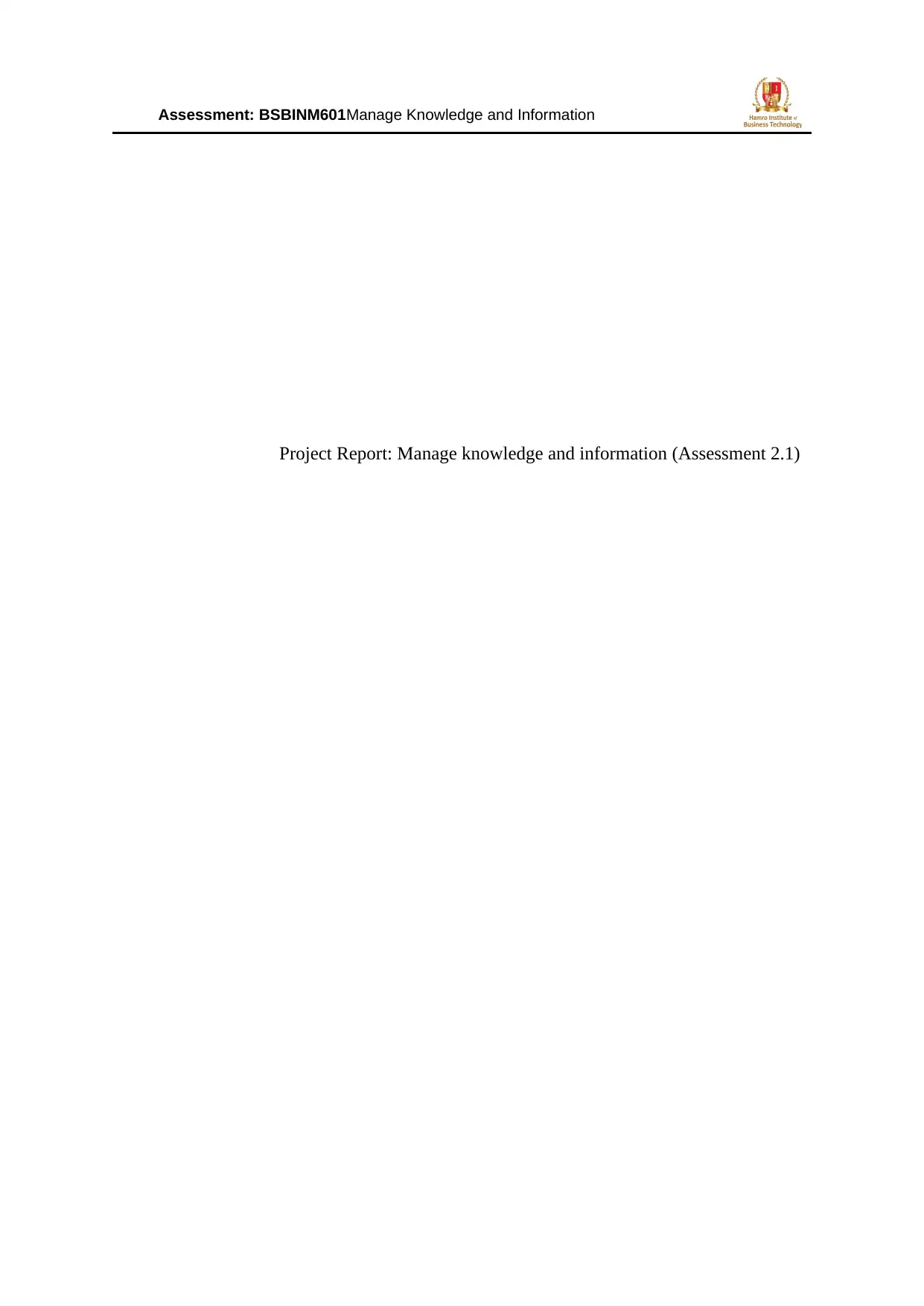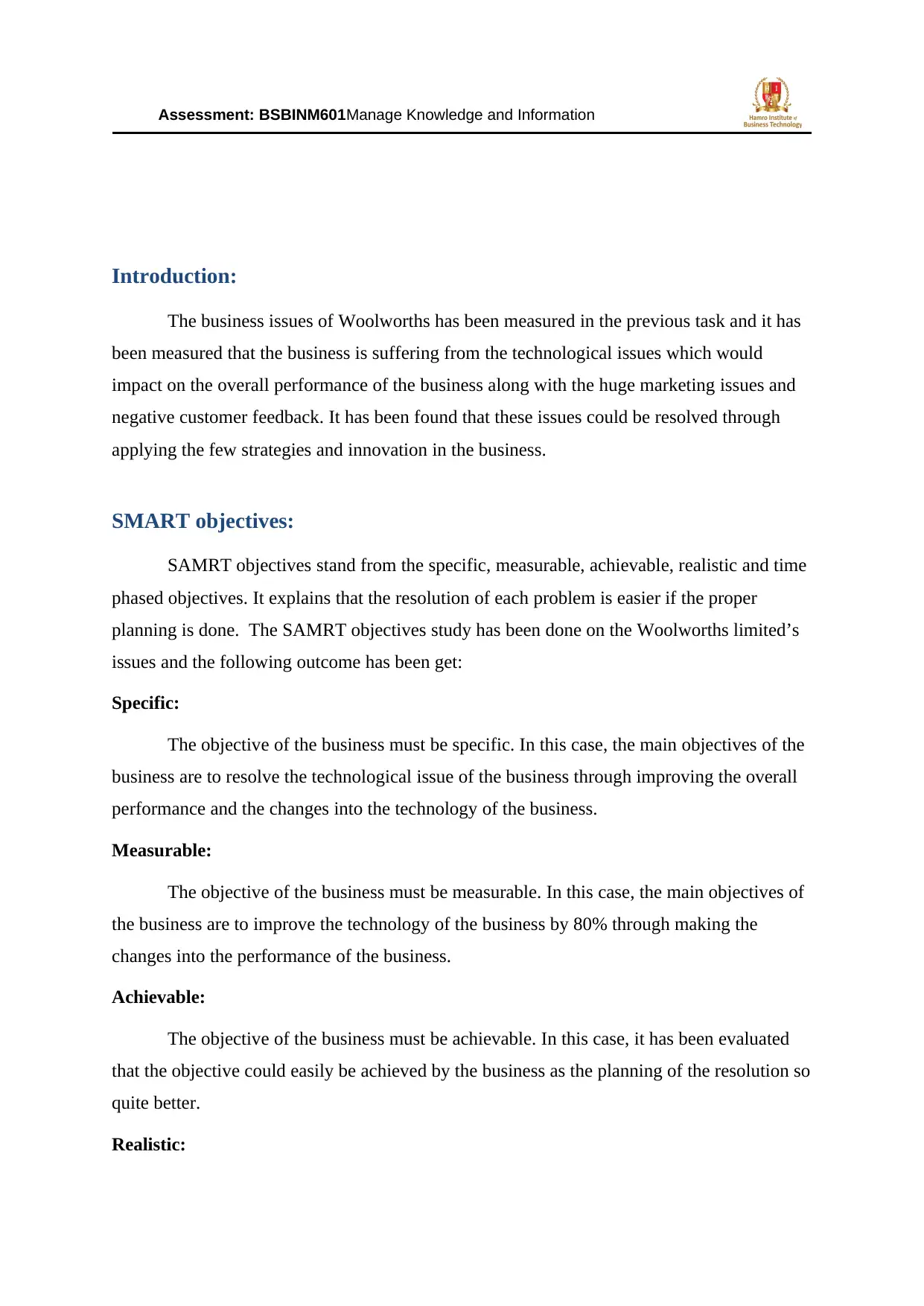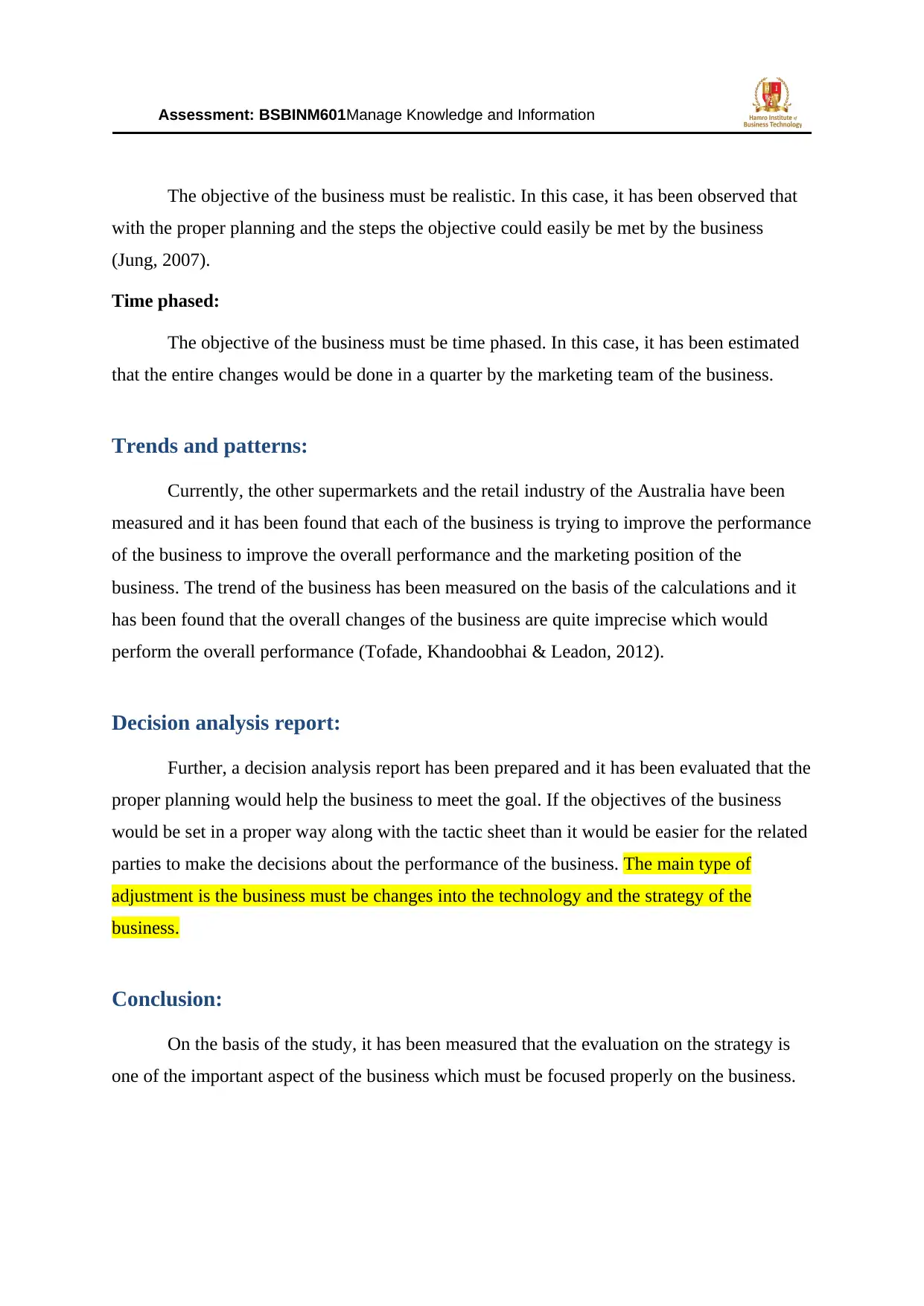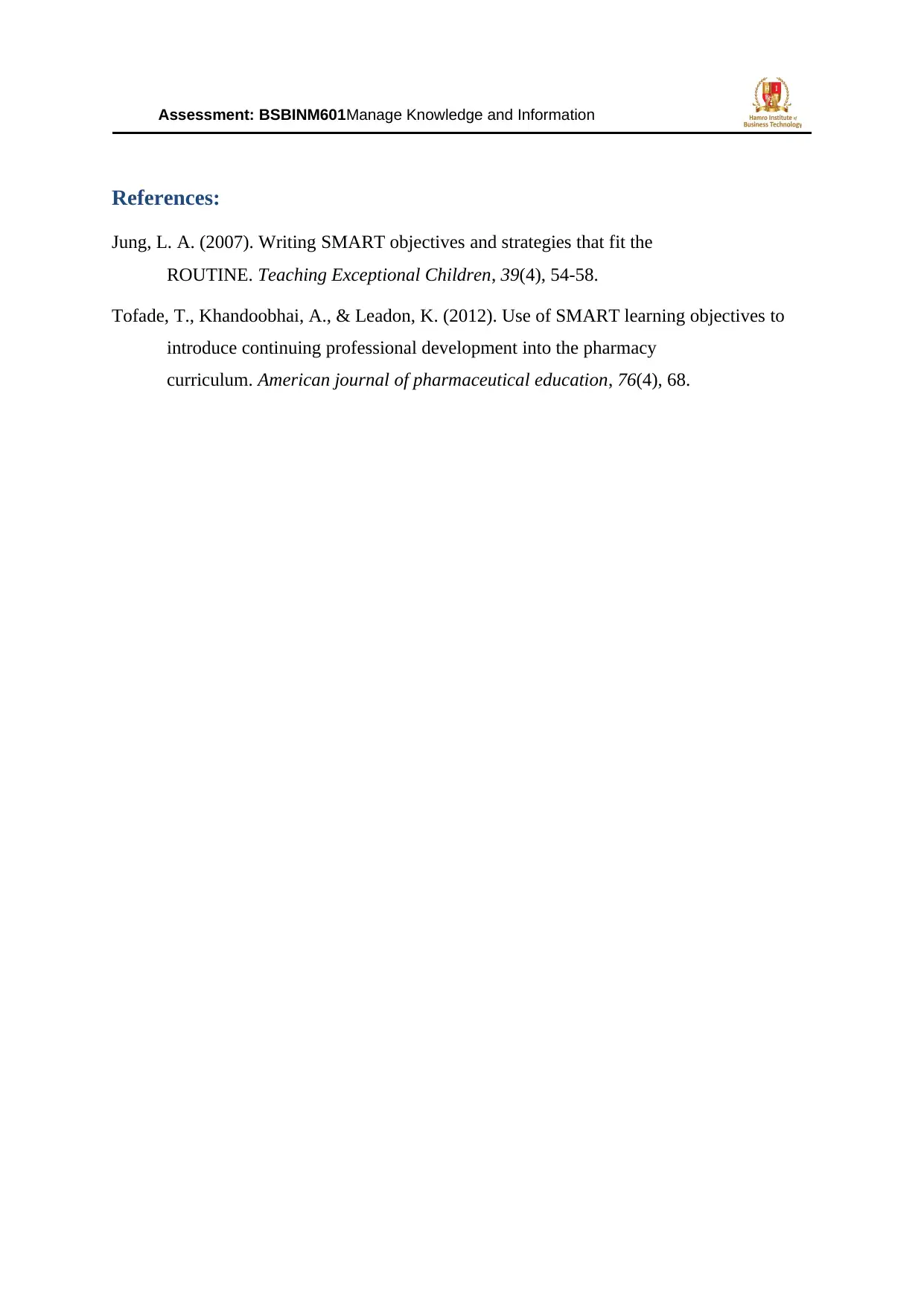Manage Knowledge and Information: Strategies for Woolworths
VerifiedAdded on 2023/06/11
|4
|671
|480
AI Summary
This report discusses the business issues faced by Woolworths, including technological and marketing issues, and negative customer feedback. It suggests strategies and innovation to resolve these issues, including the use of SMART objectives and a decision analysis report. The report also highlights the trends and patterns in the Australian retail industry and emphasizes the importance of evaluating business strategies.
Contribute Materials
Your contribution can guide someone’s learning journey. Share your
documents today.
1 out of 4









![[object Object]](/_next/static/media/star-bottom.7253800d.svg)